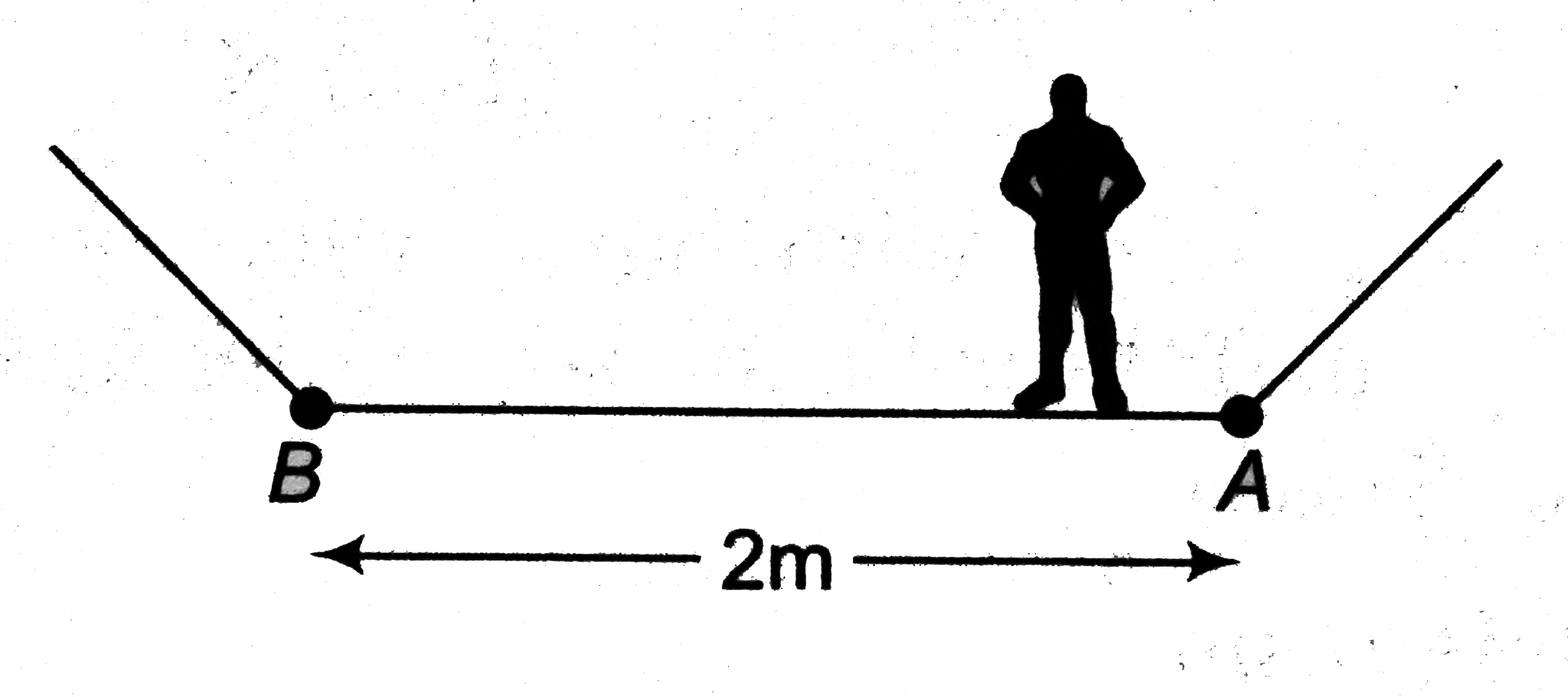A man of mass 70 kg is standing at one end of a stationary, floating barge of mass 210 kg. he then walks to the other end of the barge, a distance of 90 meters. Ignore any frictional effect between the barge and the water.
Q. How far will the barge move?
Since there are not external forces acting on theman+barge system, the center of mass of the system cannot accelerate. In particular, since the system is orginally at rest, the center of mass cannot move. Lettingx=0 denote the midpoint of the barge (which is its own center of mass, assuming it is uniform), we can figure out the center of mass of the mass+barge system.
xcm=m1x1+m2x2m1+m2=(70)(−45)+(210)(0)70+210=−3,150280=−11.25.
So the center of mass is a distance of 11.25 meters from the midpoint of the barge, and since the man's mass is originally at the left end, the center of mass is a distance of 11.25 meters to the left of the barge's midpoint.

When the man reaches the other end of the barge, the center of mass will, by symmetry, be 11.25 meters to the right of the midpoint of the barge. but, since the position of the center of mass cannot move, this means the barge itself must have moved a distance of 11.25+11.25=22.5 meters to the left.
Topper's Solved these Questions
Similar Questions
A man of mass 70 kg is standing at one end of a stationary, floating barge of mass 210 kg. he then walks to the other end of the barge, a distance of 90 meters. Ignore any frictional effect between the barge and the water.
Q. If the man walks at an average velocity of 8m/s what is the average velocity of the barge?
View SolutionA boy of mass 30 kg is standing at one end on a stationary boat over a lake. The boat has a mass 70 kg and length 10 m. Now the boy walked to the other end of the boat. Relative to the ground
View Solution
Knowledge Check
A boy of mass 50kg is standing at one end of a boat of length 9m and mass 400kg. He runs to the other end. The distance through which the centre of mass of the boat boy system moves is
A0B1mC2mD3mA boy having a mass of 40kg stands at one end A of a boat of length 2m at rest. The boy walks to the other end B of the boat and stops. What is the distance moved by the boat? Friciton exists between the feet of the boy and the surface of the boat. But the friction between the boat and the water surface may be neglected. Mass of the boat is 15kg.
 A(a) 0.49mB(b) 2.46mC(c) 1.46mD(d) 3.2m
A(a) 0.49mB(b) 2.46mC(c) 1.46mD(d) 3.2m
A boy of mass 30 kg is standing at one end on a stationary boat over a lake. The boat has a mass 70 kg and length 10 m. Now the boy walked to the other end of the boat. Relative to the ground
View Solution(i) Find the acceleration of the centre of mass of two particle approaching towards each other under their own grabitational field.
(ii) A boy of mass 30 kg is standing on a flat boat so that he is 20 meter from the shore. He walks 8 m on the boat towards the shore and then stops. The mass of the boat is 90 kg and friction between the boat and the water surface is negligible. How far is the boy from the shore now ?
View Solution(i) Find the acceleration of the centre of mass of two particle approaching towards each other under their own grabitational field.
(ii) A boy of mass 30 kg is standing on a flat boat so that he is 20 meter from the shore. He walks 8 m on the boat towards the shore and then stops. The mass of the boat is 90 kg and friction between the boat and the water surface is negligible. How far is the boy from the shore now ?
View SolutionA boy having a mass of 40kg stands at one end A of a boat of length 2m at rest. The boy walks to the other end B of the boat and stops. What is the distance moved by the boat? Friciton exists between the feet of the boy and the surface of the boat. But the friction between the boat and the water surface may be neglected. Mass of the boat is 15kg.

View SolutionA man of mass M stands at one end of a stationary plank of length L, lying on a smooth surface. The man walks to the other end of the plank. If the mass of the plank is M/3, the distance that the man moves relative to the ground is
View SolutionA man of mass M stands at one end of a stationary plank of length L, lying on a smooth surface. The man walks to the other end of the plank. If the mass of the plank is M/3, the distance that the man moves relative to the ground is
View Solution
